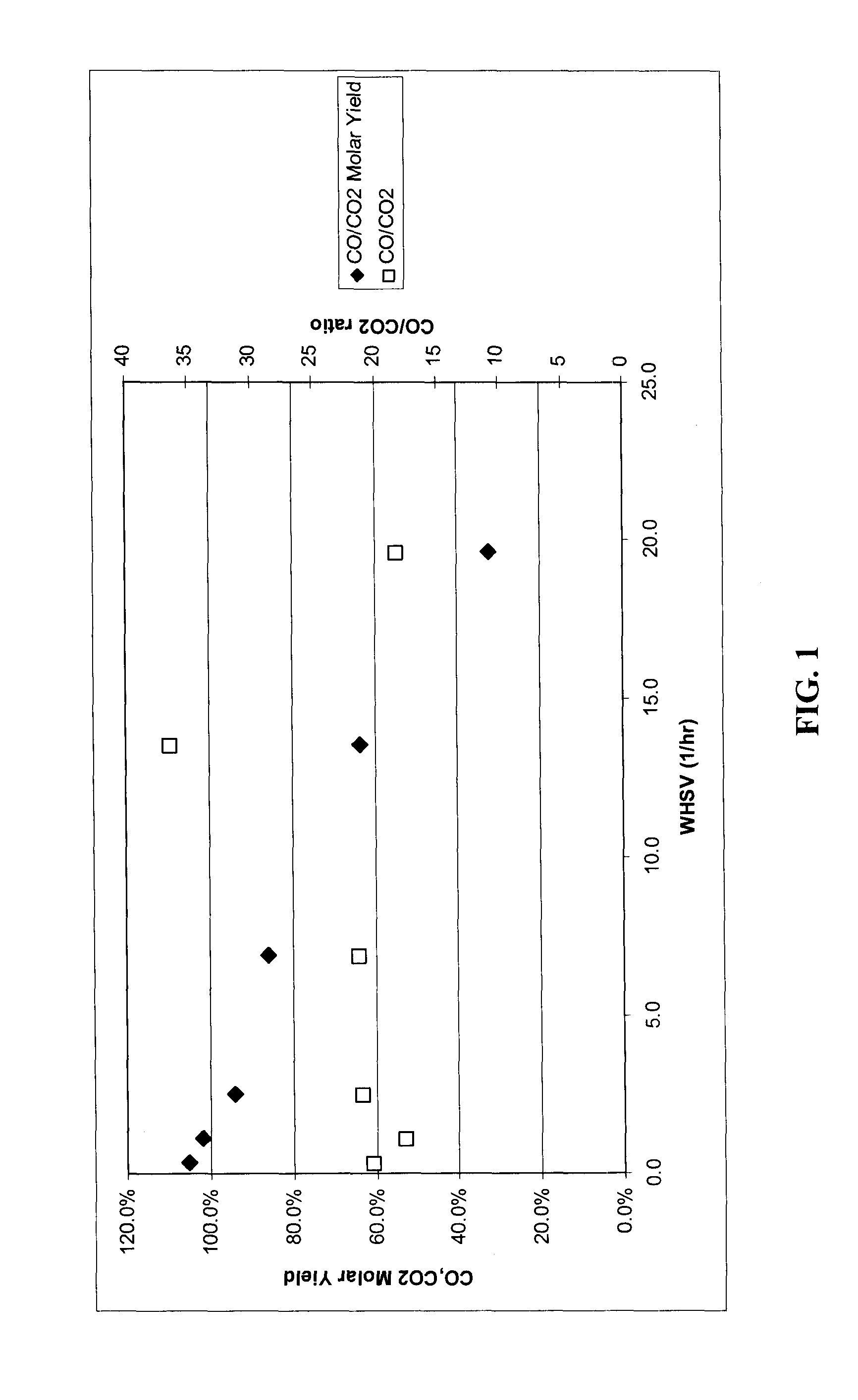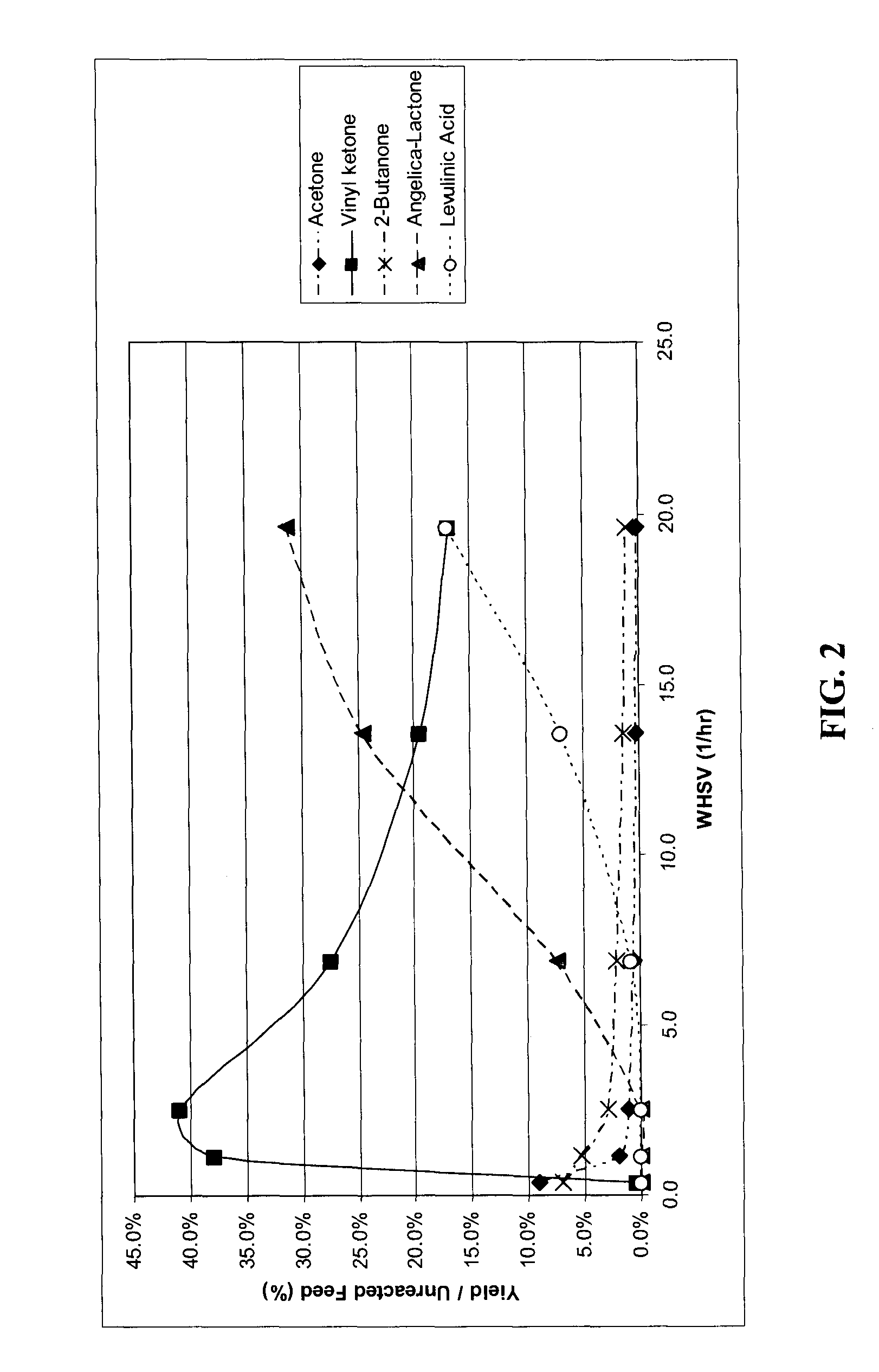Production of methyl-vinyl ketone from levulinic acid
- Summary
- Abstract
- Description
- Claims
- Application Information
AI Technical Summary
Benefits of technology
Problems solved by technology
Method used
Image
Examples
examples
[0049]The following examples are included solely to provide a more thorough description of the method disclosed and claimed herein. The examples do not limit the scope of the method in any fashion.
Experimental
[0050]Amorphous silica-alumina (MCC 25, Grace Davidson with a Si / Al ratio of 4), niobic acid (HY-340, Companhia Brasileira de Metalurgia e Mineração (CBMM)), USY-zeolite (Si / Al=5, Engelhard), and sulfated zirconia (MEI Chemicals) were used as received.
[0051]Experiments were carried out in an ¼″ outside diameter stainless steel tubular upflow reactor loaded with 0.1-2 grams of acid catalyst mixed with crushed quartz chips (to reduce reactor dead volume) and held in place by quartz wool (Alltech).
[0052]In a typical experiment, the catalysts were heated to the desired temperature under flowing hydrogen. The hydrogen flow was then discontinued and liquid flow was then started. The feed for all runs comprised 10 wt % levulinic acid solution in water.
[0053]Insulated aluminum blocks w...
PUM
| Property | Measurement | Unit |
|---|---|---|
| Temperature | aaaaa | aaaaa |
| Temperature | aaaaa | aaaaa |
| Temperature | aaaaa | aaaaa |
Abstract
Description
Claims
Application Information
 Login to View More
Login to View More - R&D
- Intellectual Property
- Life Sciences
- Materials
- Tech Scout
- Unparalleled Data Quality
- Higher Quality Content
- 60% Fewer Hallucinations
Browse by: Latest US Patents, China's latest patents, Technical Efficacy Thesaurus, Application Domain, Technology Topic, Popular Technical Reports.
© 2025 PatSnap. All rights reserved.Legal|Privacy policy|Modern Slavery Act Transparency Statement|Sitemap|About US| Contact US: help@patsnap.com



